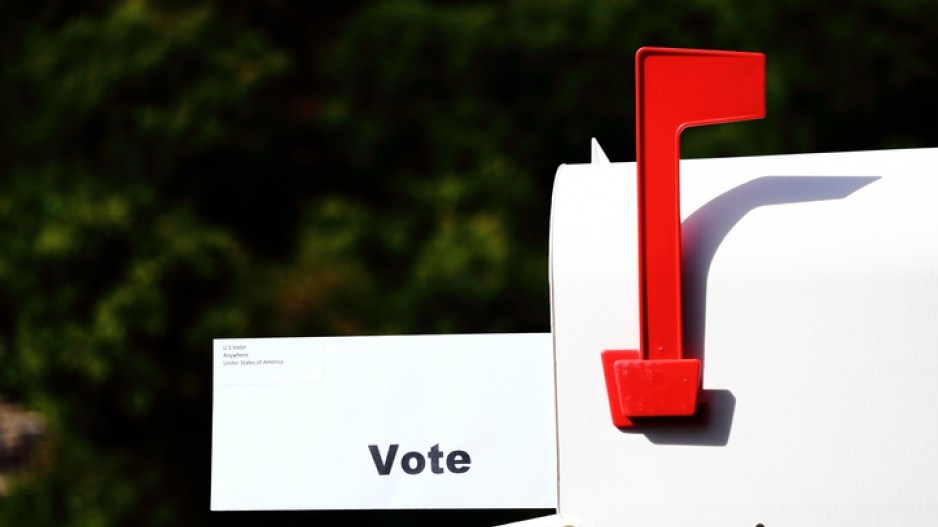British Columbians are participating in an electoral campaign like no other. In the middle of the COVID-19 pandemic, voters are being asked to consider the proposals of political parties and to figure out who they want at the helm of the provincial government for the next four years.
While discussions about the possibility of a snap election did not take political observers by surprise, many questions remain about the way in which the province’s eligible voters will act in exercising their democratic duty.
Research Co. and Glacier Media asked likely voters in the province about how they cast their ballots four years ago, their plans for this snap election and their confidence in Elections BC – the non-partisan office of the British Columbia legislature responsible for conducting provincial and local elections – to handle matters under the current state of affairs.
In our survey, a majority of likely voters (58%) remember casting their ballot in person on Election Day in May 2017, while more than a third (36%) say they voted in person during advance voting. Only 2% took advantage of postal voting in the last democratic process.
When these same voters are asked what they foresee in 2020, there are significant shifts that will place a unique strain on Elections BC. Practically three in 10 likely voters in British Columbia (29%) say they plan to cast their ballot by mail. The proportion of likely voters who are considering postal voting is highest among men (31%), and those aged 35 to 54 (33%).
Regionally, the fluctuations are daunting. In the Fraser Valley and Vancouver Island, a third of likely voters (32% each) say they intend to cast their ballot by mail. They may be joined by 29% of those who live in Metro Vancouver.
Across British Columbia, only 28% of likely voters currently plan to visit a polling station on election day – a significant reduction from the 58% who exercised their right this way in 2017. Just over one in four (27%) intend to rely on advance voting.
The Fraser Valley again emerges as an area where residents are not particularly thrilled with the prospect of voting in person on October 24. Only 17% of Fraser Valley voters say they will cast their ballot on election day, compared with 26% in northern B.C., 27% on Vancouver Island and 31% in Metro Vancouver. The only region where a majority of voters plans to vote on October 24 is southern B.C. (56%).
These findings suggest that, at this early stage of the campaign, the number of election day voters will be significantly lower than in 2017. There are also fewer likely voters willing to exercise their right during the advance polls (from 36% in 2017 to 27% in 2020).
The challenge of the early election call has not made many people question the ability and integrity of Elections BC. Sizable majorities of likely voters in the province express confidence in the non-partisan office to oversee the entire voting process (90%), ensure that there is no fraudulent activity with mailed ballots (82%) and enforce social distancing at polling stations (74%).
If just under a third of the electorate ultimately votes by mail, it may be impossible to know the winner in many constituencies on election night. Those looking at New Brunswick as an example of a recent “pandemic election” where the public went to bed knowing who the premier would be must consider two facts: the significantly smaller size of the electorate in the Atlantic province and the proportion of mail-in ballots. According to official figures, 17% of New Brunswick’s voters requested a mail-in ballot this year. At this point, 29% of British Columbians are considering this course of action.
In 2017, it was impossible to declare a winner for a few days because the election was close. This year may be similar, because many voters in British Columbia – even at a time when satisfaction with the way the pandemic has been dealt with is high – do not want to set foot inside a polling station on election day.
This measurement, like all others that happen during a campaign, may go through changes. If the number of COVID-19 cases climbs in the next few weeks, we may see more voters looking at the postal option. If the situation starts to get better, some may decide that voting in person represents little risk. In a campaign that has to be carefully scripted, the COVID-19 pandemic is the one issue that leaders, political organizers and volunteers cannot control on their own. •
Mario Canseco is president of Research Co.
Results are based on an online study conducted from September 21 to September 23 among 750 likely voters in British Columbia. The margin of error, which measures sample variability, is plus or minus 3.6 percentage points, 19 times out of 20.




